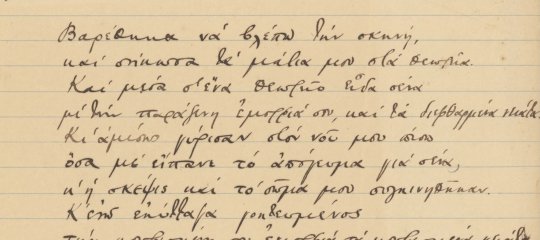Αρχαία Μακεδονία
Δημήτριος Κουγιουμτζόγλου
Η παρουσίαση αυτή ήταν ανοιχτή στο κοινό, έγινε μέσα στα πλαίσια της προσφοράς μου, ως αποσπασμένου εκπαιδευτικού, εδώ στη Μόσχα και σκοπό είχε να ενημερώσει το ευρύτερο κοινό για την ιστορία και τον πολιτισμό της ιδιαίτερης πατρίδας μου. Επειδή, όμως, θεωρώ ότι γενικότερα το θέμα της Μακεδονίας συζητιέται αρκετά καί παγκοσμίως, λόγω καί της γνωστής διένεξης, έκρινα σκόπιμο να δημοσιεύσω αυτήν την παρουσίαση έτσι ώστε ο κάθε εκπαιδευτικός, όπου και αν είναι αποσπασμένος, να μπορεί να την αξιοποιήσει.
Πρέπει να τονίσω πως το κείμενο είναι όσο πιο απλό γίνεται, μια και το κοινό της παρουσίασής μου δεν ήταν εξειδικευμένο στο χώρο της ιστορίας. Ακόμα, επειδή την παρουσίασή μου ανά διαφάνεια ακολουθούσε η μετάφραση στη ρωσική από τη διευθύντρια του Κέντρου κ. Θεοδώρα Γιαννίτση, (το ρωσικό κείμενο είναι διαθέσιμο για κατέβασμα στον ιστότοπο του κέντρου) αναγκάστηκα στην πράξη να «κόψω» λίγο από το αρχικό κείμενο (μαζί, βέβαια και κάποιες διαφάνειες) προς εξοικονόμηση χρόνου. Ο καθένας από εσάς μπορεί να το αξιοποιήσει ολόκληρο, να κάνει επιλογές ή, αν θέλει, τις δικές του προσθήκες στην παρουσίαση που θα σχεδιάσει ο ίδιος, ανάλογα με το δικό του κοινό. Κάθε φορά που πέφτει η επόμενη διαφάνεια υπάρχει ένα κεφαλαίο ∑ στην αρχή της παραγράφου.
Στο τέλος παρατίθεται η βιβλιογραφία που χρησιμοποίησα (καί στο διαδίκτυο) καθώς και κάποιοι τίτλοι βιβλίων για πρόσθετο διάβασμα. Πηγή των διαφανειών αποτελεί, επίσης, η επιλεγμένη βιβλιογραφία με εξαίρεση λίγες διαφάνειες που προέρχονται από το προσωπικό μου φωτογραφικό αρχείο. Με τη διάλεξη για τη Μακεδονία ολοκληρώθηκε για μένα ο μικρός κύκλος αρχαιολογικών διαλέξεων που έδωσα εδώ στη Μόσχα, νοσταλγική επιστροφή στα χρόνια προ του διορισμού μου στη Μέση Εκπαίδευση.
Ακολουθεί σε συνημμένο το κείμενο (word) της Παρουσίασης
- Εισέλθετε στο σύστημα για να υποβάλετε σχόλια











